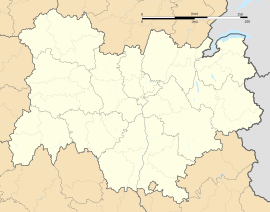Soyons facts for kids
Quick facts for kids
Soyons
|
|
|---|---|
| Country | France |
| Region | Auvergne-Rhône-Alpes |
| Department | Ardèche |
| Arrondissement | Tournon-sur-Rhône |
| Canton | Saint-Péray |
| Area
1
|
7.9 km2 (3.1 sq mi) |
| Population
(2005)
|
1,936 |
| • Density | 245.1/km2 (635/sq mi) |
| Time zone | UTC+01:00 (CET) |
| • Summer (DST) | UTC+02:00 (CEST) |
| INSEE/Postal code |
07316 /07130
|
| Elevation | 104–280 m (341–919 ft) (avg. 107 m or 351 ft) |
| 1 French Land Register data, which excludes lakes, ponds, glaciers > 1 km2 (0.386 sq mi or 247 acres) and river estuaries. | |
Soyons is a commune in the Ardèche département in southern France. Humans have lived on this 30 hectare site for 150,000 years. This means it is the oldest inhabited (lived in) site in France, with remains from all the time periods. Because of Soyons location along the Rhône, at the crossroads of routes, it played a major role in the history of France.
History
The Paleolithic caves of Greenhouse Guercy [1] provided safe and comfortable living for Neanderthal man. The caves were lived in by man, alternating with large meat eating animals (carnivores) (lions, hyenas and cave bears). Two outdoor areas for the butchering of mammoths, used by the Cro-Magnon Neanderthal people, have been discovered.
Several Neolithic populations lived on the site. In particular, Chalcolithic people buried their dead in burial caves like Grotte des Enfants and Hole Roland, as well as under mounds, such as that of Greenhouse Aurouze.
A Gallic oppidum, a pre-Roman town protected with a fort, was a feature on the massive Malpas and along the Rhone, the site of the Brégoule [2]. This was the home of the tribe Segovellaunes who worshipped the goddess Soïo, and who gave the village its name.
During the Roman period, the Romans built a town on the site of the existing village.
In the Middle Ages, Soyons became a principality, with a royal abbey and a Carolingian church. The village and the plateau are surrounded by ramparts, with corner towers; the Leaning Tower is the remains of the tower of a fort. During the wars of religion the city was besieged and destroyed several times.
See also
 In Spanish: Soyons para niños
In Spanish: Soyons para niños



